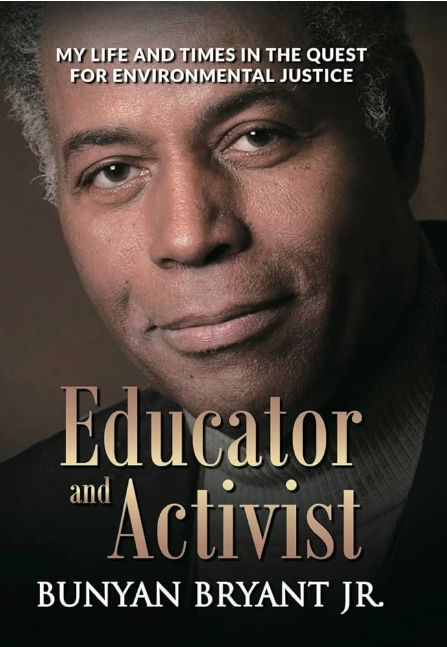
Educator and Activist: My Life and Times in the Quest for Environmental Justice
Hailing from Flint, Bunyan Bryant Jr. earned his graduate degrees from U-M before becoming the first Black faculty member in the School for Environment and Sustainability and a pioneer in the field of environmental justice.
On his first visit to the University of Michigan’s campus in 1952, Bunyan Bryant Jr.’s “dominant emotion was one of awe bordering on disbelief—followed closely by a conviction that this was not the place for someone like me.” The story of how he came to change his view of Michigan and how in the process he came to be a leading advocate for racial and environmental justice form the core of his engaging and thoughtful memoir.
Born in deeply segregated Little Rock, Arkansas, Bryant and his family moved to Flint, Michigan, in 1942 seeking work. Discouraged by the racism he encountered in his classrooms Bryant became convinced that it was impossible for African Americans to succeed academically. It was only dread of a lifetime working in a Buick plant that caused him to enroll in Michigan State Normal College (now Eastern Michigan University). There he met former U-M student Roy Robinson, who changed his life. Robinson excelled in his classes, proving African Americans could succeed in academics and inspiring Bryant to do the same. He even joined Robinson’s Kappa Alpha Psi fraternity, whose membership included students from both U-M and Eastern.
After graduation, Bryant moved to Ann Arbor where he was disgusted by the blatant discrimination in housing he encountered. While enrolled in Michigan’s Master of Social Work Program, he joined the Council on Racial Equality to fight discrimination in housing, barbershops, and employment around the city. He was a participant in the first Black Action Movement, and a witness to the others. Then, in 1972, he was invited to join the faculty of the School for Environment and Sustainability, despite that, by his own admission, he “knew nothing about natural resources or the environment.” He excelled as an educator, bridging environmental concerns with social justice. He worked with advocacy groups across the country and world and in 1994 joined the National Environmental Justice Advisory Council under President Bill Clinton.